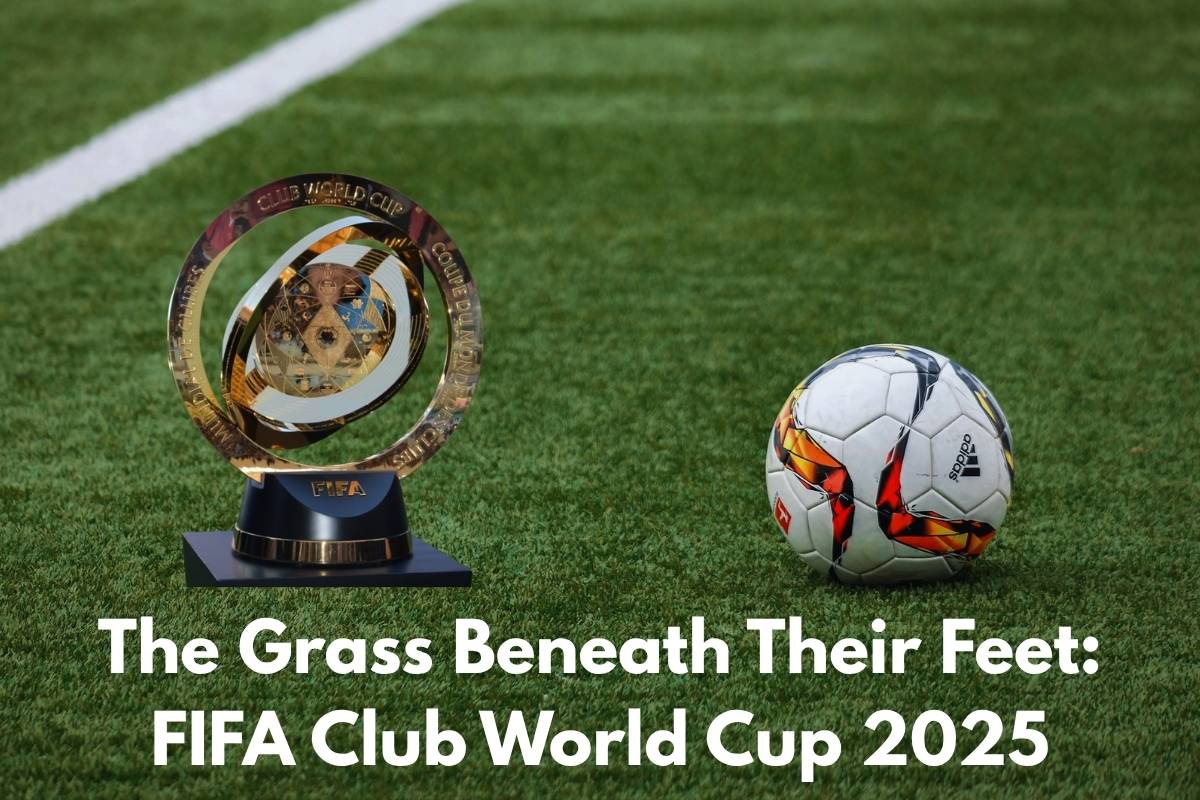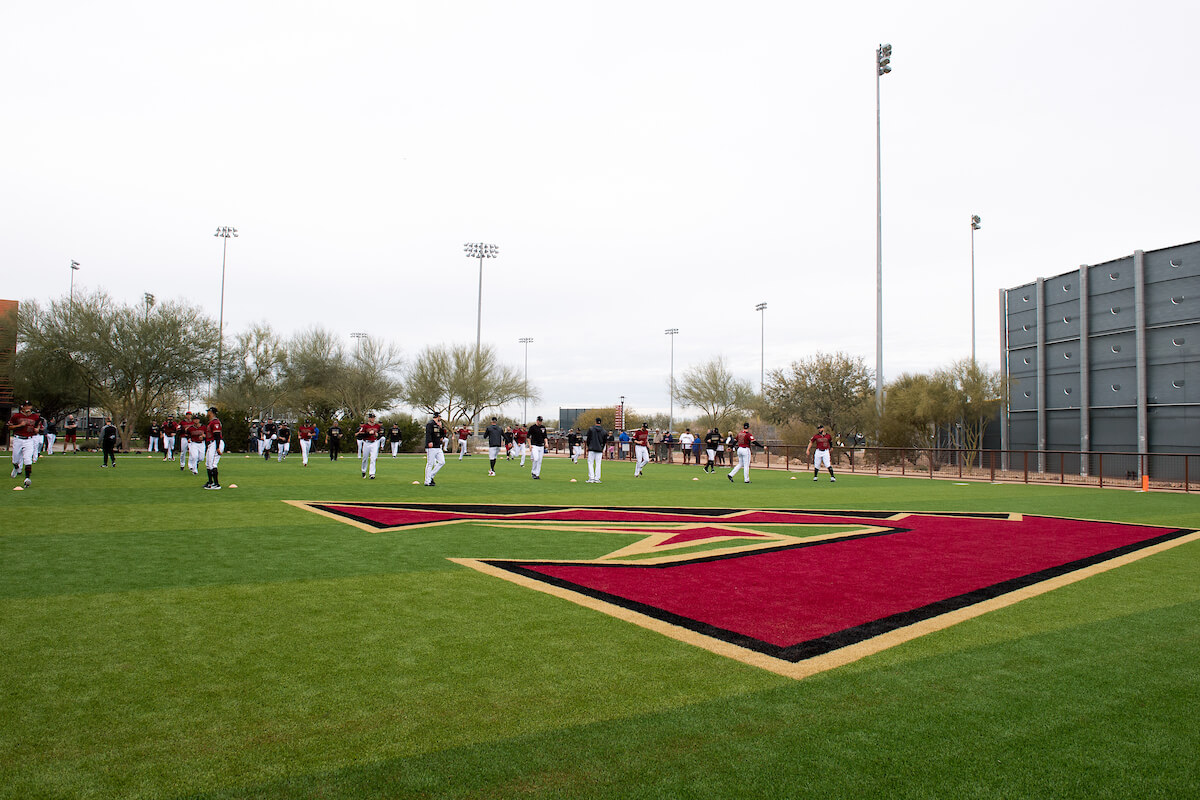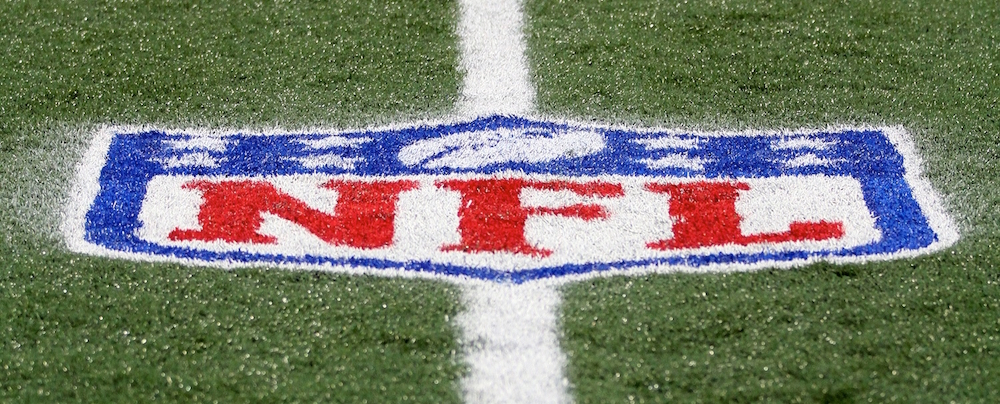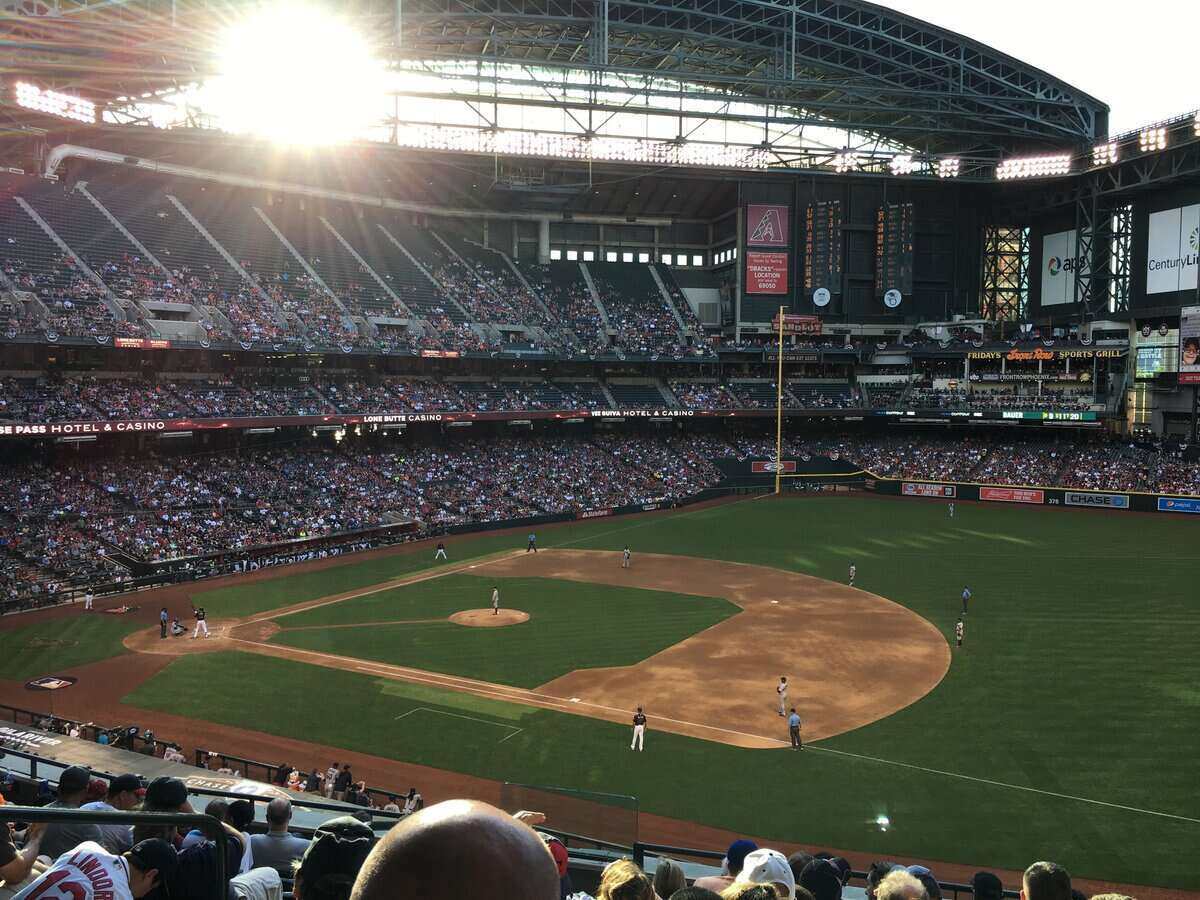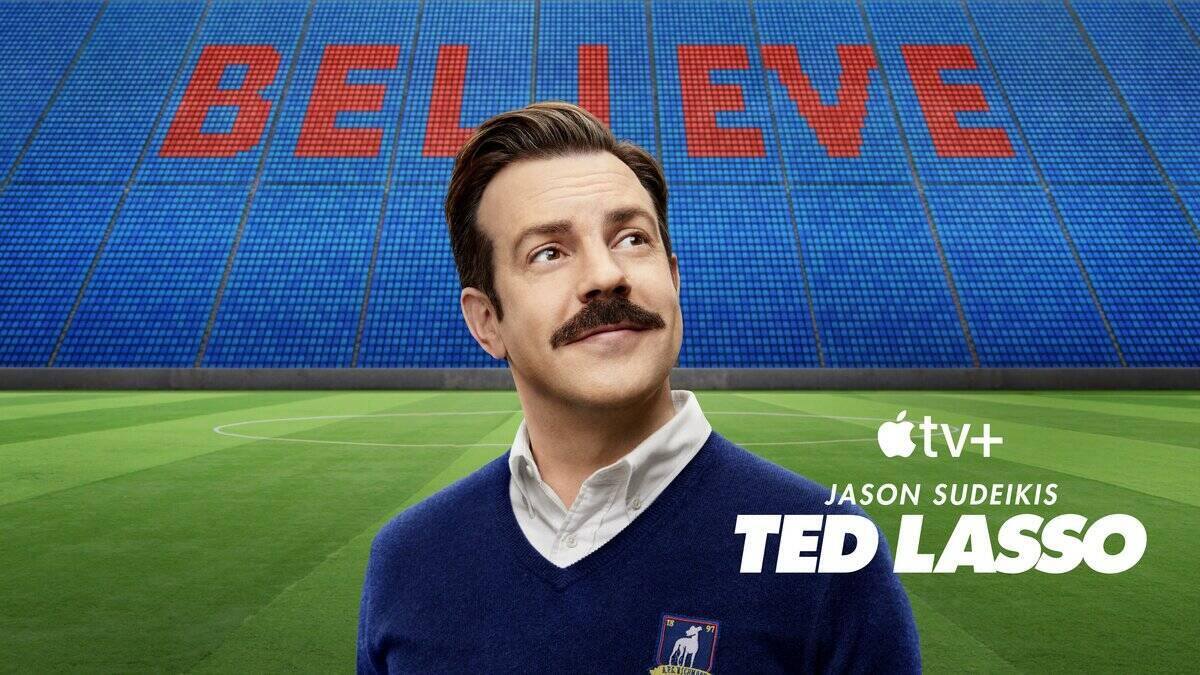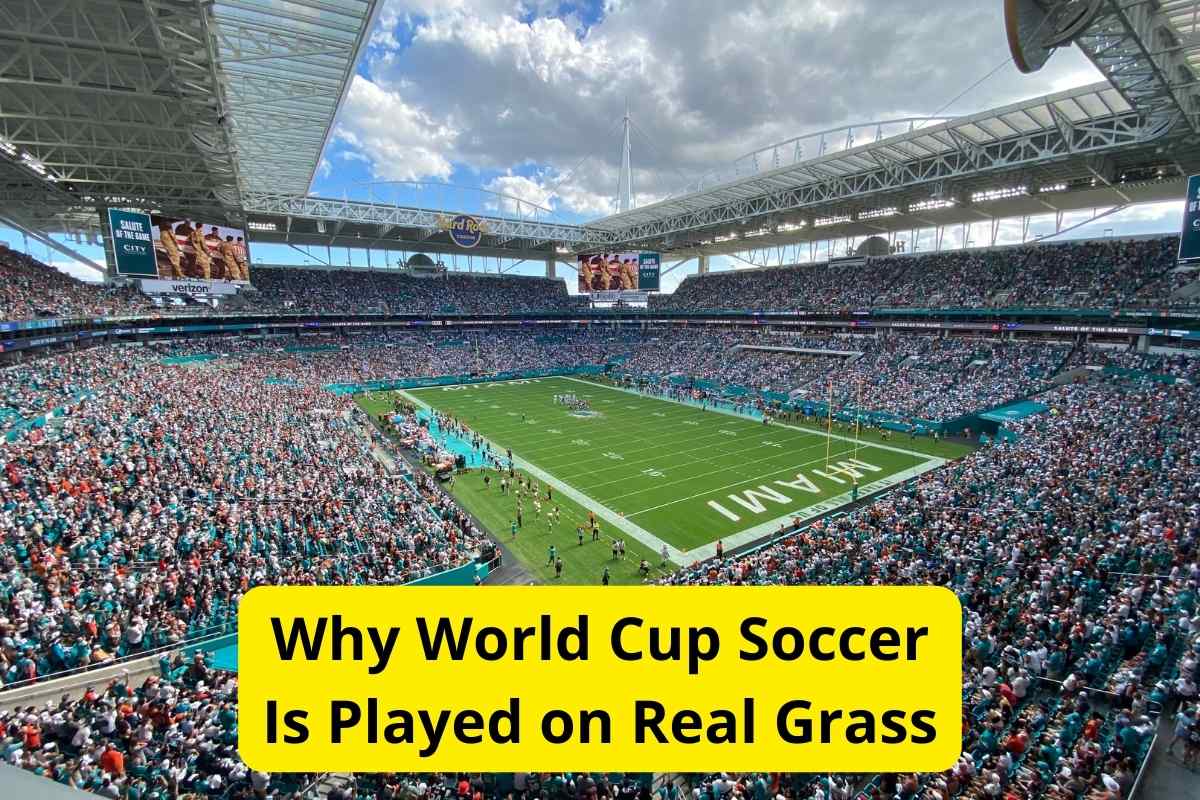
Get ready to watch the beautiful game played on even more beautiful fields! Why? FIFA requires all World Cup matches be played on real grass instead of artificial turf.
So, as we inch closer to the 2026 FIFA World Cup, a monumental event that’s set to be the largest in FIFA’s history, it’s not just the number of teams or fans that’s growing, but something much closer to the earth — literally.
LawnStarter is all about grass, and this article looks at the incredible lengths FIFA and and stadiums take to grow World Cup fields. For example, the drought-tolerant grass on which the World Cup matches were played in Qatar was grown outside Phoenix and flown to Qatar.
Why Does FIFA Require Natural Grass?
FIFA’s grass policy is firm and clear: natural grass only. But why this insistence on nature over synthetic? The reasons are rooted in tradition, playability, and the well-being of the players:
- Soccer’s Roots in the Soil: Soccer began on England’s grassy expanses, and natural grass has been the standard for centuries. FIFA maintains this tradition by keeping the World Cup genuine to its roots.
- A Ball’s True Path: Natural grass ensures the ball rolls predictably, matching the players’ instincts with its consistent speed and direction.
- A Softer Landing: Natural grass offers a softer surface that eases the strain on players’ musculoskeletal systems during impacts, slides, or falls, according to a study by NCBI. This reduces immediate injury risks and reduces damage over tournament play.
- Lowering the Heat: Grass stays naturally cooler than artificial turf, notably during sunny, intense play. This coolness helps combat player fatigue and secures a high quality of play.
- Hygienic Huddles: Natural turf’s knack for soaking up sweat and organic materials lowers bacterial survival rates on its surface. It’s the field’s way of giving germs the boot and keeping health risks low.
- Sustainability in the Spotlight: FIFA values sustainability and environmental considerations. Natural grass pitches, sustainably managed, support ecosystems in ways synthetics cannot.
Getting the Grass Ready for World Cup 2026
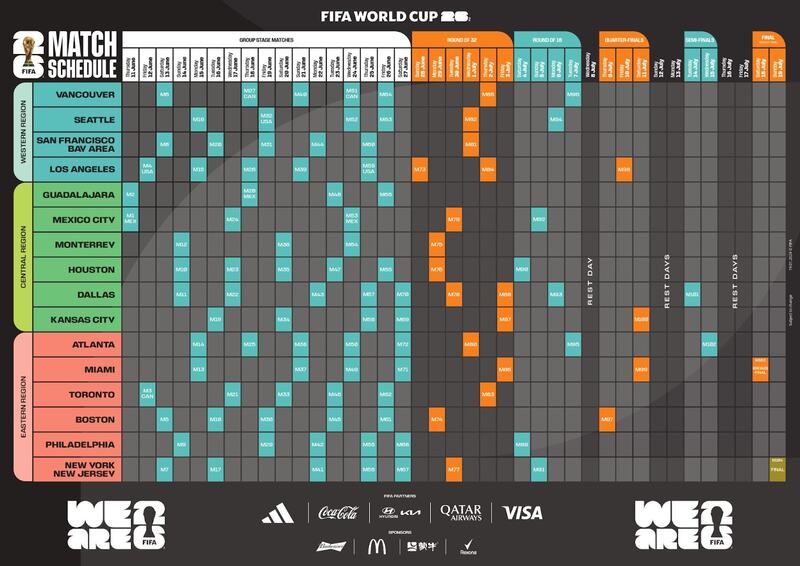
From the roaring crowds in Dallas when The Green Bay Packers won the Super Bowl XLV to the thrilling final whistle of the 1994 FIFA World Cup at the Rose Bowl, American stadiums are undertaking an ambitious transformation: Out with the synthetic and in with the sensational softness of natural grass.
Why? To create the greenest and most magnificent welcome for both football players and fans.
The upcoming 2026 FIFA World Cup is the largest ever, unfolding across 16 stadiums in Canada, Mexico, and the United States.
By the numbers
3 countries: The 2026 World Cup is being held in the United States, Mexico and Canada. That’s up from the traditional one.
48 teams: The field has blossomed to 48 teams for the first time. To this point, the cutoff had long been 32 teams.
80 matches: These will be fielded in the 16 stadiums
Breakdown by country
- Canada: BMO Field and BC Place
- Mexico: Estadio Akron, Estadio Azteca, and Estadio BBVA
- United States: Mercedes-Benz Stadium, Gillette Stadium, AT&T Stadium, NRG Stadium, Arrowhead Stadium, SoFi Stadium, Hard Rock Stadium, MetLife Stadium, Lincoln Financial Field, Levi’s Stadium, and Lumen Field
Openers and closers
- Mexico’s Opening Match: Estadio Azteca is set to host the opening match on June 11, 2026
- Canada and U.S. Debuts: On June 12, Toronto and Los Angeles will have their opening matches at BMO Field and SoFi Stadium.
- Grand Finale: MetLife Stadium gets the honor of hosting the final on July 19.
The Turf Transformation: A Closer Look at Each U.S. Stadium
Now that we know the “why,” let’s talk about the “how.” Each venue has its unique challenges: be it climate, soil conditions, or existing infrastructure.
Just what grass will be used is yet to be determined in some cases.
A Purdue University study suggests Poa pratensis (Kentucky bluegrass), Lolium perenna (perennial ryegrass) and Festuca arundinacea (tall fescue) are best suited to serve as soccer pitches. But what works in Seattle’s temperate weather might well be different than what best fits in Atlanta, Los Angeles, New York or any of the other areas needing to make similar alterations.
Mercedes-Benz Stadium
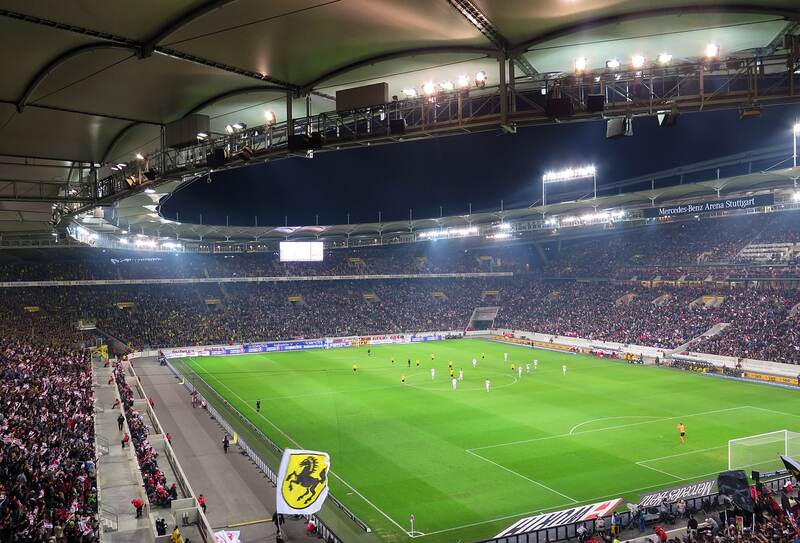
- Location: Atlanta, Georgia
- Team: Atlanta Falcons
- Seating Capacity: 71,000
- Current Turf: FieldTurf
- Date Opened: August 2017
Let’s kick things off in Atlanta. Here, they’re making a historic shift from artificial turf to natural grass. Mercedes-Benz Stadium, with seating for 71,000, has shone bright since 2017. Yet, it’s never felt the cool touch of real grass blades — until now.
The artificial-to-natural turf project is estimated to cost between $3 million to $4 million, according to Michigan State Professor John Trey Rogers. This would likely be a durable Bermudagrass or hybrid variety that can withstand the high traffic during the tournament.
Extensive lighting would also need to be installed to support grass growth. And, unfortunately, after the last whistle blows for the World Cup, Mercedes-Benz Stadium will revert to its synthetic roots.
Gillette Stadium
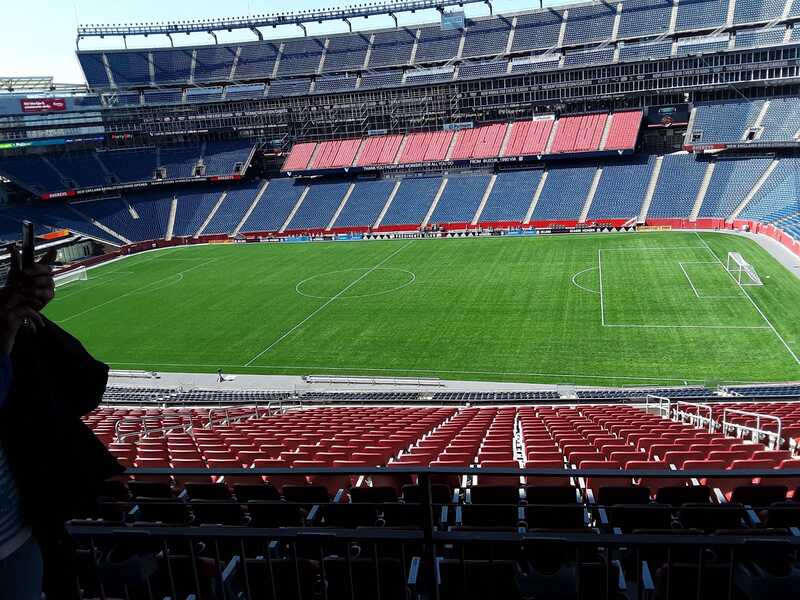
- Location: Foxborough, Massachusetts
- Team: New England Patriots
- Seating Capacity: 64,628
- Current Turf: FieldTurf CORE
- Date Opened: September 2002 (replacing Foxboro Stadium)
Gillette Stadium, a place where legends Tom Brady and the Pats have carved out their dynasty, will be filled with soccer legends during the 2026 World Cup. This home of the hardy New Englanders is set to host seven games, including a quarterfinal.
The home of the New England Patriots might have seen better days with natural grass (like in those heady pre-2006 times), but they’re rolling back the years to bring back the green glory days.
AT&T Stadium
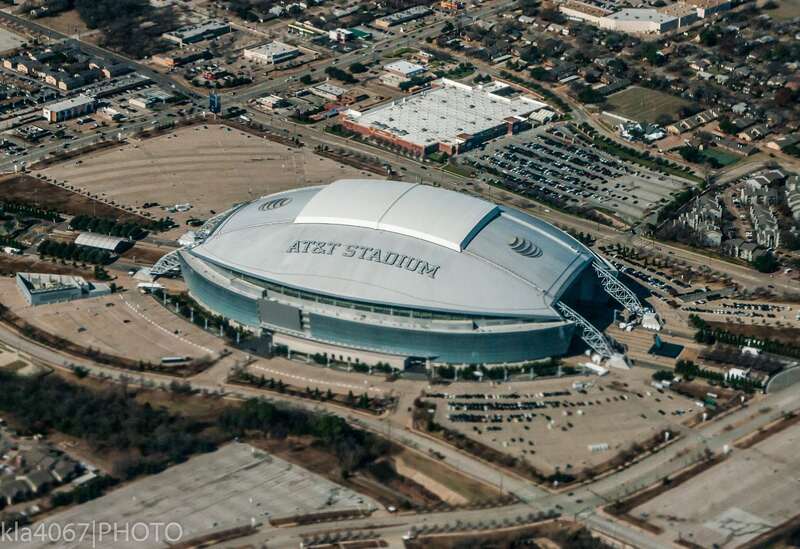
- Location: Arlington, Texas
- Team: Dallas Cowboys
- Seating Capacity: 80,000 (expandable to 100,000)
- Current Turf: Hellas Matrix Turf with Helix Soft Top
- Date Opened: May 27, 2009
AT&T Stadium, also known as “Jerry World” in honor of its owner, Jerry Jones, is pretty much a piece of art as it is a football stadium. It’s a place where Tony Romo once dodged defenders, and Ezekiel Elliott bulldozed his way through defensive lines.
With five group stage games, a couple of rounds of 32, one round of 16, and a semifinal, this goliath of venues will be swapping out its Hellas Matrix Turf for a natural grass type.
Details on the grass type and installation process remain a tightly guarded secret, though it’s expected that a Bermuda variety might be selected to withstand the infamous Texas heat.
The stadium has a retractable roof which does allow some natural light in, but additional growing lights will likely be needed to ensure healthy grass growth.
Oh, and for the World Cup matches, AT&T Stadium will be renamed Dallas Stadium to comply with FIFA regulations on not having corporate sponsors represent host venues.
NRG Stadium
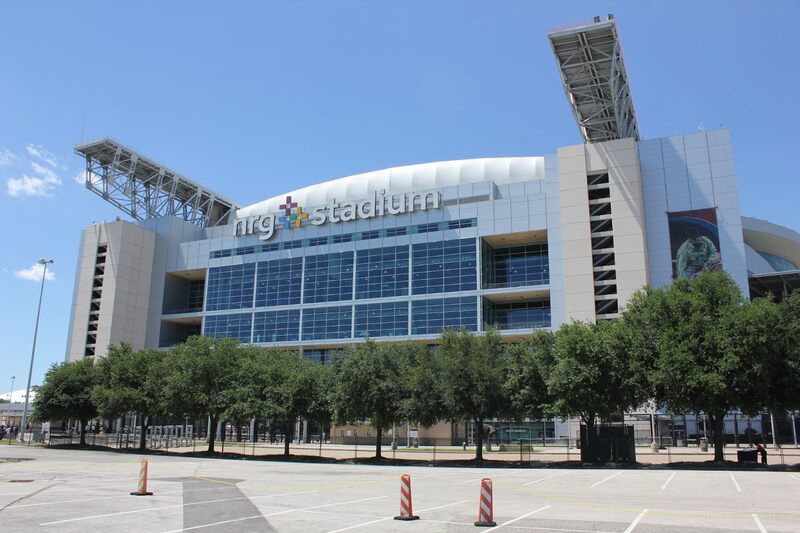
- Location: Houston, Texas
- Team: Houston Texans
- Seating Capacity: 72,220
- Current Turf: AstroTurf
- Date Opened: August 2002
Houston, we have a (grass) problem! Houston’s behemoth, NRG Stadium, has had a love-hate relationship with its playing surface. First opened with a natural grass surface that saw the athletic drama of the NFL unfold, it weathered a turn to artificial playing fields in 2015 after player concerns and logistical battles.
From AstroTurf to UBU Sports Speed Series and now to Hellas Matrix Turf, this stadium has worn many surfaces. But, for FIFA 2026, it’s going back to its roots – literally. With 7 games on its menu, including a Round of 16 match, the transformation will surely be intensive and interesting.
Houston’s hot and humid climate makes choosing the right type of grass a bit challenging. Bermuda might be the go-to choice given its resilience in such weather conditions, but extensive tests would ensure it can handle not just Houston’s weather but also the feet of international stars racing across it.
Arrowhead Stadium
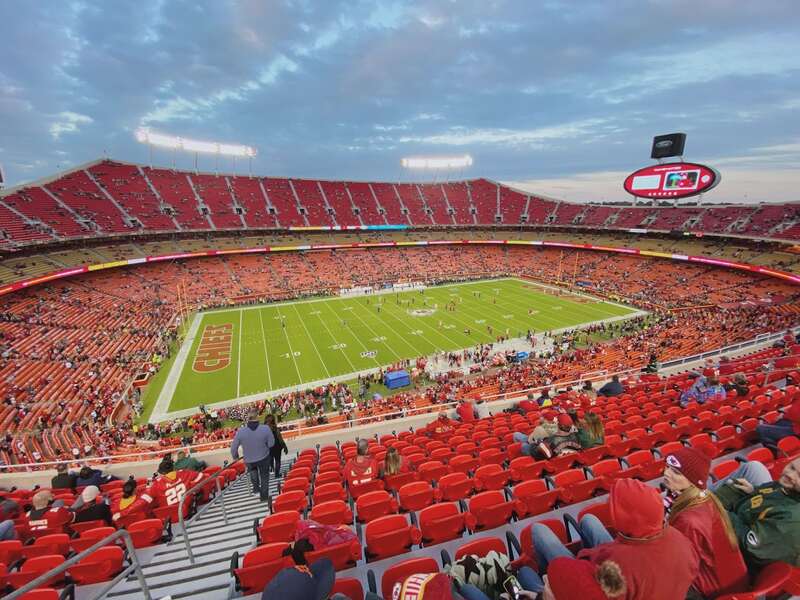
- Location: Kansas City, Missouri
- Team: Kansas City Chiefs
- Seating Capacity: 76,416
- Current Turf: NorthBridge Bermudagrass
- Date Opened: 1972
Kansas City’s pride, Arrowhead Stadium, wears its grass with honor. With a type of Bermudagrass known for cold tolerance and durability, it is ready for any header, tackle, and goal celebration thrown its way.
The stadium’s grass, already prepared for the harsh Midwestern winters, proves itself to be more than World Cup worthy. Here is where the Kansas City Chefs, fresh off their thrilling victory in Super Bowl LVIII, have solidified their status as a modern NFL dynasty.
SEE RELATED: The Story Behind Super Bowl Grass
SoFi Stadium
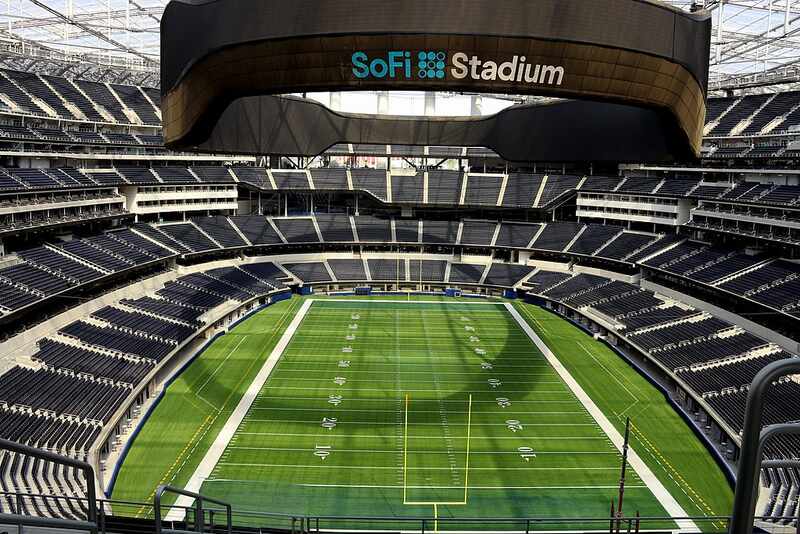
- Location: Inglewood, California
- Team: Los Angeles Rams and Los Angeles Chargers
- Seating Capacity: 70,240 (expandable up to 100,240)
- Current Turf: Hellas Matrix Turf
- Date Opened: September 2020
The Hollywood experience with all the green screens and CGI effects, near one of the most glamorous cities in the U.S., will have to make room for some real greenery on SoFi Stadium’s football field.
Home to NFL teams LA Rams and Chargers, this stadium is preparing itself to kick off the U.S. Men’s National Team at their opening match for FIFA World Cup 2026 on June 12th.
The USMNT match is just the beginning, as SoFi has more action lined up. The stadium and fans will witness 8 matches in total: Not only will there be five additional Group Stage matches, but also two nail-biting Round of 32 knockout games and one thrilling Quarterfinal game.
The artificial turf will be replaced with a temporary natural grass field, likely a variety of Bermudagrass specifically designed for California’s climate.
In addition to the turf change, the stadium will also undergo renovations to increase the field size to meet FIFA’s specifications for pitch size. This will involve installing retractable corner seats, which will increase the field size for soccer matches.
Hard Rock Stadium
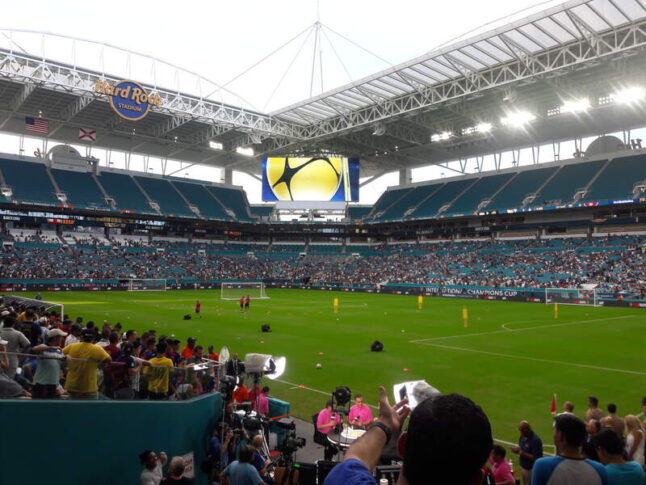
- Location: Miami Gardens, Florida
- Team: Miami Dolphins
- Seating Capacity: 64,767
- Current Turf: Tifway 419 Bermudagrass
- Date Opened: 1987
Miami’s all about the sun, the surf, and now … the sod. Hard Rock Stadium, home to the Miami Dolphins and known for hosting huge sports events like Super Bowl LIV, is already onboard with FIFA’s grass policy. Its trusty Tifway 419 Bermudagrass, a popular choice for stadiums in southern U.S. states because it thrives under high traffic and intense Florida heat, will be ready to receive soccer athletes during the World Cup.
Hard Rock Stadium is set to host 7 matches, including a quarterfinal. Messi’s potential appearance on this field could be a historic moment, drawing fans from around the globe.
MetLife Stadium
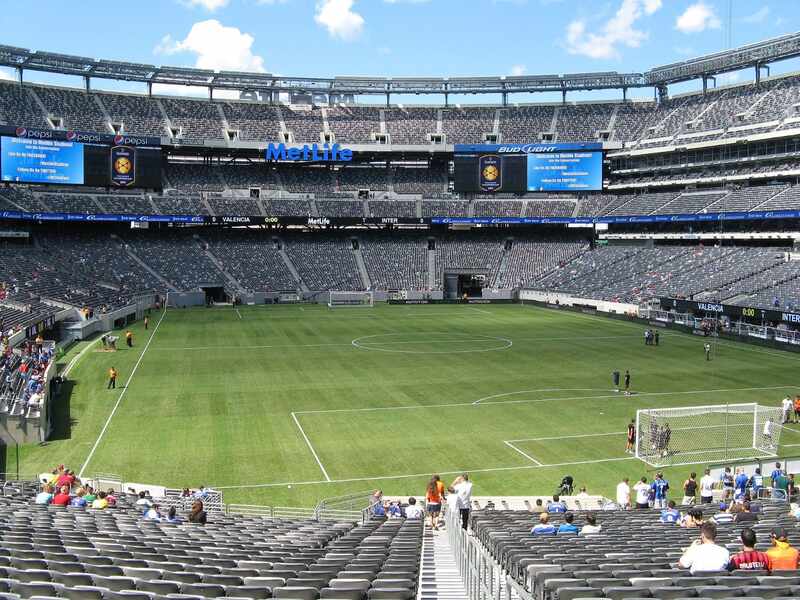
- Location: East Rutherford, New Jersey
- Team: New York Giants and New York Jets
- Seating Capacity: 82,500
- Current Turf: FieldTurf Core
- Date Opened: April 2010
MetLife Stadium has witnessed its fair share of memorable moments, including hosting Super Bowl XLVIII, in which the Seattle Seahawks celebrated their victory. This home to the New York Giants and Jets is about to experience something more: On July 19, MetLife Stadium will host the Grand Finale of FIFA World Cup 2026.
Given the climate in New Jersey, the best type of grass to lay would be Kentucky Bluegrass, a turf that thrives in cooler climates. But no matter the grass choice decision, MetLife has a history of swapping artificial turf with Mother Nature’s kind. Back in 2010, the stadium replaced its synthetic turf with real grass for a USA friendly soccer match against Brazil.
Lincoln Financial Field
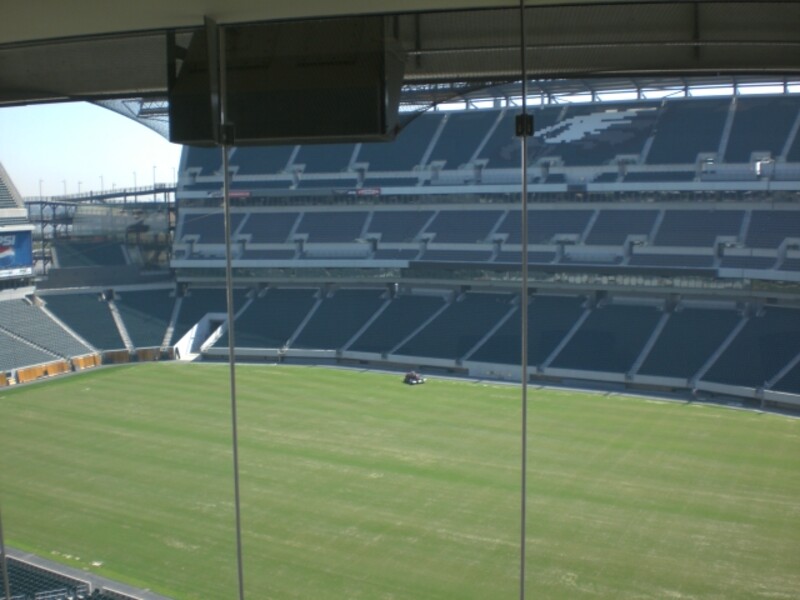
- Location: Philadelphia, Pennsylvania
- Team: Philadelphia Eagles
- Seating Capacity: 69,176
- Current Turf: Tahoma 31 Bermudagrass
- Date Opened: August 2003
Some fans might call it “The Linc,” while others may know it as the home of the NFL’s Philadelphia Eagles. But Lincoln Financial Field is not only about American football. It’s hosted international soccer games before, and now it’s preparing for sizable action during the World Cup.
It won’t be hard to get this venue up to speed with FIFA regulations, as Lincoln Financial already has Tahoma 31 Bermudagrass. This natural grass variety tolerates stress perfectly, just like Eagles fans who continue to dream of another Super Bowl win just like the one back in 2018 when they snatched victory from the New England Patriots.
This stadium will host 6 matches during the tournament, including four group stage fixtures and two Round of 16 clashes. While these might not spark as much frenzy as a Philadelphia Eagles-Dallas Cowboys clash, these soccer matches promise to be nail-biting fixtures nonetheless.
Lumen Field
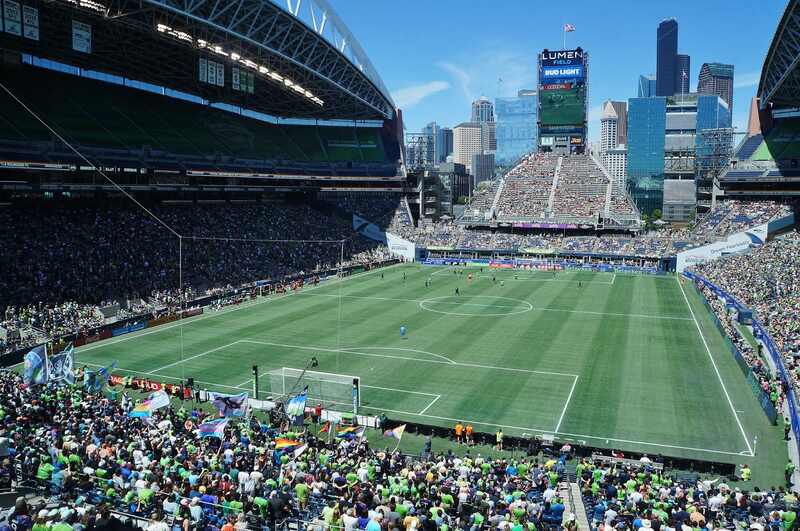
- Location: Seattle, Washington
- Team: Seattle Seahawks and Seattle Sounders FC
- Seating Capacity: 68,740
- Current Turf: FieldTurf
- Year Built: July 2002
Lumen Field is already famous for having some of the loudest fans in all of the NFL, causing actual seismic activities known as “Beast Quakes” during key moments at Seattle Seahawks games. In 2026, instead of Marshawn Lynch and Russell Wilson, maybe we will see Kylian Mbappe or Erling Haaland having the same crowd-shaking impact during the World Cup.
For a place where rain is as certain as a Starbucks at every corner, having artificial surfaces was previously a reasonable move. Now, to comply with FIFA’s requirements, Lumen Field is set for an extreme makeover from synthetic to natural grass.
The change could take place either in late 2025 or the initial months of 2026, ensuring the grass ample time to settle and root deeply. For the climate in Seattle, the most suitable grass would likely be a variety of Kentucky bluegrass or tall fescue. These cold-season types can handle the moisture and cooler conditions of the Pacific Northwest.
Levi’s Stadium
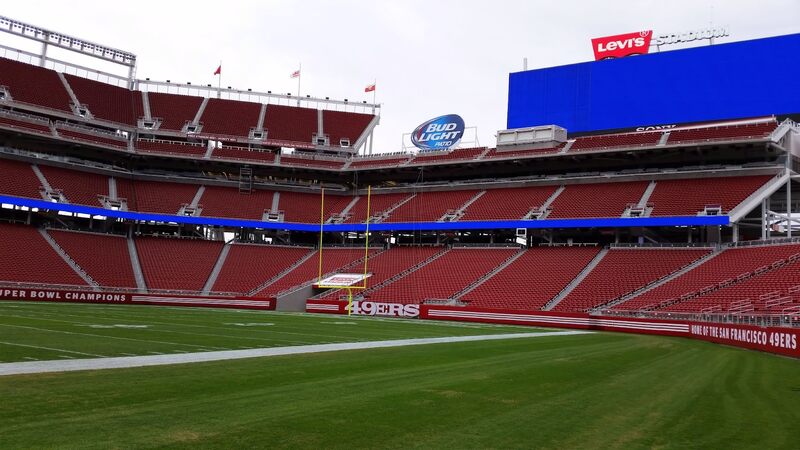
- Location: Santa Clara, California
- Team: San Francisco 49ers
- Seating Capacity: 68,500 (expandable up to 75,000)
- Current Turf: Bandera Bermudagrass
- Date Opened: July 2014
Levi’s Stadium is where the San Francisco 49ers make their opponents see red (and gold) since 2014. But for 2026, it will be home to both the FIFA World Cup and Super Bowl LX.
An area ruled by an energy-efficient natural air conditioning system, its famous coastal fog, Levi’s Stadium currently uses Bandera Bermudagrass on its turf due to its superior strength, resilience, and visual appeal.
Head Groundskeeper Matt Greiner says: “We found it has a faster recovery rate, as well as the tendency to stay green longer into the season. Most importantly, the Bandera Bermuda has good tensile strength, so when a player plants his cleat, it holds together better.”
This choice of grass demonstrates that Levi’s Stadium is already prepared for the arrival of FIFA in terms of turf quality.
Despite having high-quality grass, maintaining its pristine condition has been a challenge for Levi’s Stadium. The stadium is regularly subjected to varying weather conditions and frequent events that could dramatically affect the health of the grass.
To remedy this problem, new technologies and strategies might be used to ensure optimal field conditions during the World Cup. However, the specifics of these strategies have yet to be disclosed by the 49ers organization.
SEE RELATED: Hey, Ted Lasso, Keep Off the Soccer Grass!
The Final Whistle
The cheers, the drama, the thrill … and the grass. FIFA 2026 is sure to bring about all these and more. But before the stadiums can welcome football stars from around the globe, they’ll need a little grass TLC.
Do you want to be a part of this soccer history in the making? All you need is a natural grassy field of your own, a big screen TV, and lots of snacks. Or better yet – grab your tickets now for the games at these soon-to-be lush green stadium fields across North America!
P.S. Is your lawn ready for its own World Cup moment? LawnStarter’s local lawn care pros can get your backyard ready for some serious game action. Whether you’re thinking of laying down that fancy hybrid Bermudagrass or just want to spruce up your existing lawn, you’re just a call, a tap on our app, or a click on our website away from a championship-worthy yard.
LawnStarter freelance writer and longtime professional sportswriter John Hickey contributed to this report.
Main Image Credit: Hard Rock Stadium / Gatorfan252525 / Wikimedia Commons / CC BY-SA 4.0 with Text Overlay using Canva Pro
